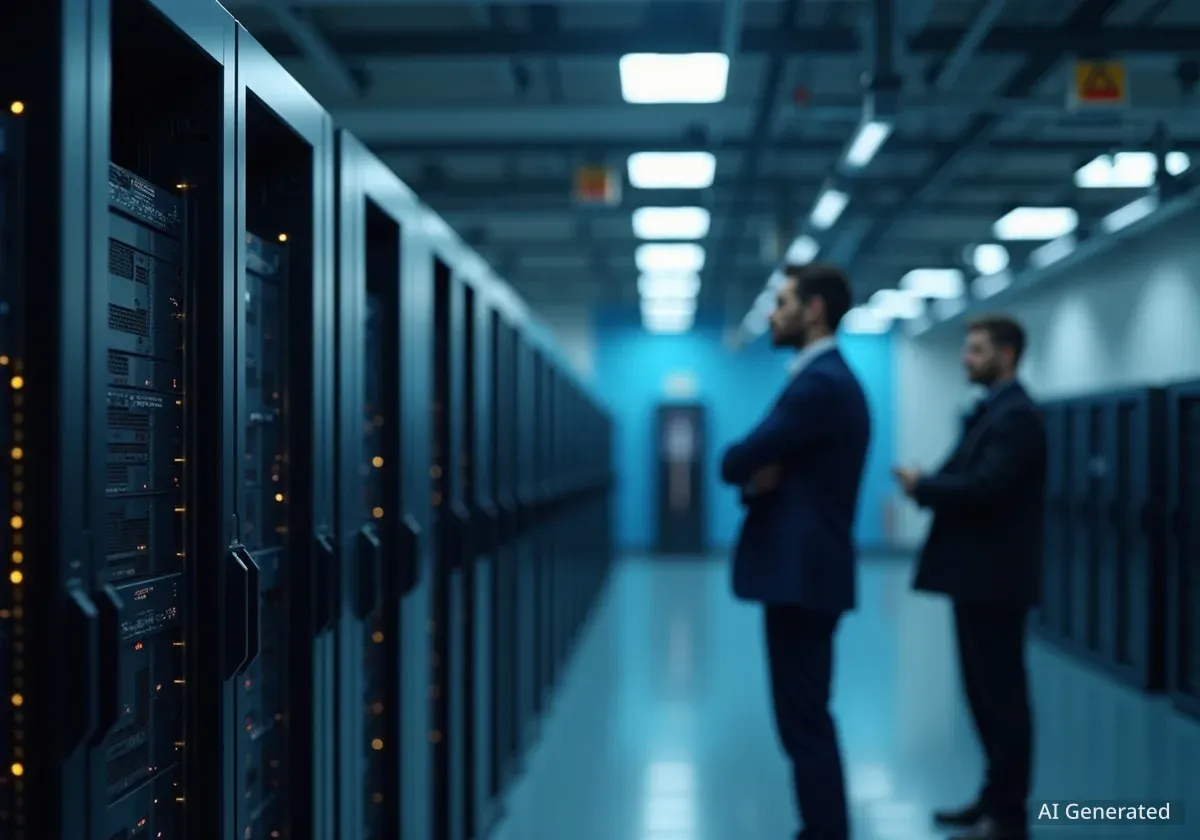OpenAI has released a new set of open-source artificial intelligence models designed to give developers more control over content safety. The models, named gpt-oss-safeguard, allow platforms to create and apply their own custom safety policies, moving away from a one-size-fits-all approach to moderation.
Available in two sizes, 120 billion and 20 billion parameters, these tools are designed to interpret safety rules in real-time. This allows developers to adapt quickly to new challenges without needing to retrain an entire system from scratch. The models are available for free under an Apache 2.0 license.
Key Takeaways
- OpenAI has launched gpt-oss-safeguard, a pair of open-source AI models for content safety tasks.
- The models allow developers to define their own safety policies instead of relying on pre-trained rules.
- It uses a reasoning process to classify content, which developers can review for transparency.
- This approach is designed for platforms needing flexible, adaptable moderation for nuanced or evolving online risks.
A New Approach to Content Moderation
Traditional content moderation AI typically learns from vast datasets of pre-labeled examples. This method trains the model to recognize patterns associated with unsafe content, but the underlying safety policy is only inferred, not directly understood by the AI. This can make it difficult to update rules or address new types of harmful content without a costly and time-consuming retraining process.
The gpt-oss-safeguard models operate differently. Instead of relying on pre-labeled data, a developer provides the model with two things at the same time: a specific policy written in plain language and the content that needs to be evaluated. The AI then uses a reasoning process, known as chain-of-thought, to analyze the content against the provided rules and make a classification.
This method offers significant flexibility. For example, an online gaming community could write a policy to detect and flag discussions about cheating, while an e-commerce site could create rules to identify potentially fake product reviews. Because the policy is supplied at the moment of evaluation, it can be updated or changed instantly.
How It Works: Policy as an Input
The core innovation of gpt-oss-safeguard is its ability to treat a safety policy as a direct instruction. The model doesn't just look for keywords; it attempts to understand the intent and nuances of the rules provided by the developer and explain its decision-making process. This transparency allows developers to see why a piece of content was flagged.
Internal Development and Performance
This technology is not entirely new for OpenAI. The company has been using a similar, more powerful internal tool called "Safety Reasoner" to safeguard its own flagship products, including GPT-5 and the video generation model Sora 2. This internal system allows OpenAI to dynamically adjust its safety protocols in response to real-world usage.
The company revealed that safety reasoning can account for a significant portion of its operational costs, sometimes reaching as high as 16% of the total computing power for recent product launches. This highlights the resources dedicated to ensuring model outputs align with safety guidelines.
Performance in Testing
In a series of evaluations, the gpt-oss-safeguard models demonstrated strong performance. On an internal multi-policy accuracy test, they outperformed both the base gpt-oss models and the advanced gpt-5-thinking model. On a public dataset from 2022, gpt-oss-safeguard also performed slightly better than all other models tested, including the internal Safety Reasoner.
However, on another public benchmark called ToxicChat, the internal Safety Reasoner held a slight edge. OpenAI suggests that the smaller, open-source models still offer a compelling balance of performance and accessibility for many developers.
Practical Applications and Limitations
The gpt-oss-safeguard models are positioned for specific use cases where nuance and adaptability are critical. These include:
- Evolving Harms: Addressing new or rapidly changing types of unsafe content.
- Nuanced Domains: Situations where context is crucial and simple classifiers may fail.
- Data Scarcity: When a platform lacks enough labeled examples to train a traditional classifier.
- Explainability: When understanding the reason for a classification is more important than raw speed.
Despite their advantages, the models have limitations. They can be more computationally intensive and slower than traditional classifiers. For highly complex risks where extensive training data is available, a dedicated, custom-trained classifier may still offer better performance. OpenAI's internal teams often use a hybrid approach, using smaller, faster models to first identify potentially problematic content before passing it to the more powerful Safety Reasoner for detailed analysis.
Community Collaboration and Future Steps
The development of gpt-oss-safeguard involved collaboration with several trust and safety organizations, including ROOST, SafetyKit, Tomoro, and Discord. This partnership aimed to ensure the models meet the practical needs of platforms working to protect their online spaces.
Vinay Rao, the Chief Technology Officer at ROOST, commented on the model's design.
"gpt-oss-safeguard is the first open source reasoning model with a ‘bring your own policies and definitions of harm’ design. Organizations deserve to freely study, modify and use critical safety technologies and be able to innovate. In our testing, it was skillful at understanding different policies, explaining its reasoning, and showing nuance in applying the policies, which we believe will be beneficial to builders and safety teams.”
To further this collaborative effort, ROOST is launching the ROOST Model Community (RMC), a forum for researchers and safety professionals to share best practices and provide feedback on open-source safety tools. The gpt-oss-safeguard models are now available for download on the Hugging Face platform, inviting the broader developer community to begin implementing and experimenting with this new approach to AI safety.





